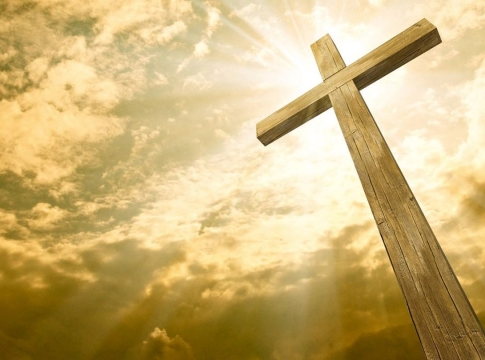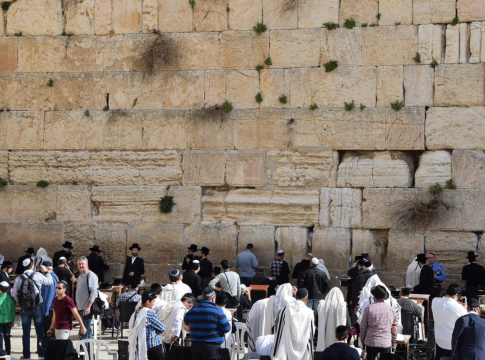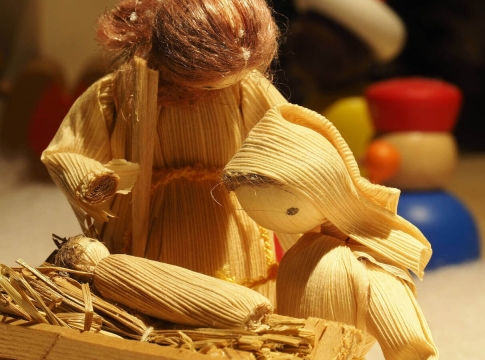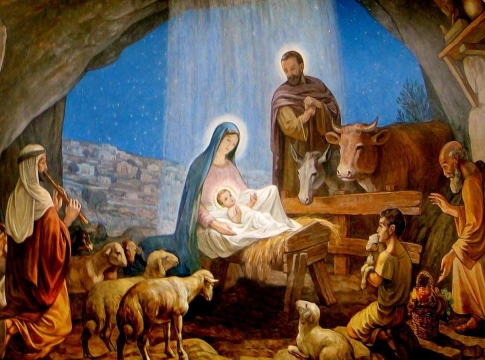
Though it was [the darkest time in human history], Jesus was not surprised by His crucifixion. This was what He had warned His disciples would occur. For instance, Mark 8:31 states, “He began to teach them that the Son of Man must suffer many things, be rejected by the elders, chief priests, and scribes, and be killed, and rise again after three days.” However, Jesus was not the first to predict His own death. Many of the Scriptures in the Old Testament also anticipate this event.
“These are my words that I spoke to you while I was still with you, that everything written about Me in the Law of Moses and the Prophets and the Psalms must be fulfilled,” says Jesus to them, according to Luke 24:44–46. “Thus it is written, that the Christ should suffer and on the third day rise from the dead,” He remarked to them as He opened their brains to comprehend the Scriptures.
It was of great assistance to the bewildered and disillusioned disciples to realize that Jesus’ death was a component of [God’s everlasting plan of salvation]. When they looked back, they realized how many verses in the Old Testament of the Bible truly mentioned Jesus. Regretfully, we are unable to read Jesus’ explanation found in Luke 24. Which specific Old Testament scriptures He applied to Himself is unknown to us. Let us now examine a few instances of Bible texts that were realized in the suffering and death of Jesus.
Beating and spitting
The Servant of the Lord is a figure that the prophet Isaiah wrote multiple songs about. According to Isaiah 52:13, this person “shall be high and lifted up, and shall be exalted,” but he is also hated and rejected by people (Isaiah 53:3). The Lord’s Servant states in Isaiah 50:6, “I gave my cheeks to those who pull out the beard, and my back to those who strike; I did not hide my face from shame and spitting.”
Jesus is covered by these prophesies. “So, wanting to appease the crowd, Pilate released Barabbas for them, and having scourged Jesus, he delivered Him to be crucified,” according to Mark 15:15. The narrative picks up a few verses later in Mark 15:19–20: “And they were kneeling down in homage to Him, and they were striking His head with a reed and spitting on Him.” After mocking Him, they took off His purple garment and dressed Him in His own clothes. And they carried Him forth to be crucified.
Forsaken by God and mocked by humans
David composed Psalm 22 during a time when he felt abandoned by God. “Around three in the afternoon, Jesus cried out in a loud voice, ‘Eli, Eli, lema sabachthani?’ (which means My God, my God, why have you forsaken me?)” is how Jesus began this Psalm. (See Matthew 27:46; Psalm 22:1). Here are some more remarkable parallels between the suffering of Jesus and this Psalm:
- “Everyone who sees me mocks me; they make mouths at me; they wag their heads; He trusts in the Lord; let Him deliver him; let Him rescue him, for He delights in him,” laments David in Psalm 22:7-8. The people and religious leaders who witnessed Jesus’ suffering are described in Matthew as follows: “Those who passed by hurled insults at Him, shaking their heads.” .. Along with the scribes and elders, the chief priests also made fun of him, stating, “He trusts in God.” If God so chooses, let Him be saved right now. Matthew 27:39–43
- “My tongue sticks to my jaws, and my strength is dried up like a potsherd,” according to Psalm 22:15. Psalm 69:21, “For my thirst they gave me sour wine to drink,” is another passage to compare. According to John 19:28–29, “After this, Jesus said, ‘I thirst,’ fulfilling the Scripture, knowing that all was now completed. They placed a sponge full of the sour wine on a hyssop branch and held it to His mouth as a jar filled with it stood there.
- David cries, “A company of evildoers encircles me; they have pierced my hands and feet,” in Psalm 22:16. Crucifixion had not been conceived while David lived. Jesus, though, was crucified. They fastened his hands and feet on the cross.
- “They divide my garments among them, and for my clothing they cast lots,” according to Psalm 22:18. Jesus suffered just this: “After He was crucified, they divided His garments among them by casting lots.” Matthew 27:35
Darkness at noon
Amos foretells, “And on that day, declares the Lord God, I will make the sun go down at noon and darken the earth in broad daylight,” referring to the day of God’s anger on His people (Amos 8:9). God was angry with Jesus because of human sin. “Darkness covered the entire land from the sixth hour until the ninth hour” (Matthew 27:45) was the time of day when He was crucified. The sixth hour was at 12:00, or noon, because the Jews began their counting of the hours at 6:00.
The Lamb of God
The Lord’s Servant is described in Isaiah 53:7 as “being oppressed and afflicted, yet he opened not his mouth; like a lamb led to the slaughter, and like a sheep that is silent before its shearers, so he opened not his mouth.” “Then Pilate said to Him [= Jesus], ‘Do you not hear how many things they testify against you?'” is recorded in Matthew 27:13–14. However, He did not respond to any of the charges, leaving the governor astonished.
What happened after Jesus died is described in the gospel of John as follows: “The Jews requested Pilate to break their legs and take them away since it was the day of preparation and they did not want the bodies to remain on the cross on the Sabbath (because that Sabbath was a high day). Thus, the first man’s legs, as well as the second man’s who had been crucified beside him, were broken by the troops. However, they refrained from breaking Jesus’ legs upon realizing that He had already passed away. However, as soon as a soldier pierced His side with a spear, water and blood spurted forth (John 19:31–34).
John says that the prophesies of the Old Testament were fulfilled. Indeed, Psalm 34:19–20 states that although the righteous suffer many afflictions, the Lord delivers them from all of them. Not one of His bones is fractured; he retains all of them. Amazingly, God commanded the Israelites not to break any of the lamb’s bones when they celebrated the annual Passover supper and ate a lamb (Exodus 12:46; Numbers 9:12). [The ultimate Passover Lamb] was Jesus. There was no breakage to his bones. Rather, a spear pierced His side, realizing the prophecy of Zechariah that “they shall mourn for him when they look on me, on him whom they have pierced” (Zechariah 12:10).
Numbered with the transgressors
The Lord’s Servant is also mentioned in Isaiah 53:12 and 53:9, where it states, “And [he] was numbered with the transgressors.” “And even though he had committed no violent crimes and had no dishonesty in his mouth, they buried him alongside the wicked and a wealthy man.” “And with Him [=Jesus] they crucified two robbers, one on His right and one on His left,” according to Mark 15:27. “We are receiving the due reward of our deeds; but this Man has done nothing wrong,” remarked one of these robbers (Luke 23:41). So, sure, although being totally innocent, Jesus was counted among the transgressors.
However, following His death, everything took a sharp turn: “In the evening, a wealthy Arimathean man named Joseph appeared. Joseph was also one of Jesus’ disciples.” He went to Pilate and requested Jesus’s body. Pilate then gave the order to have it given to him. After removing the body, Joseph covered it with a fresh shroud made of linen and placed it in his newly constructed tomb that he had hewn out of the rock (Matthew 27:57-60). Thus, even though Jesus died a criminal’s death, He died “with a rich man”!
These are only a few Old Testament verses from the Bible that take on new and deeper significance in light of Jesus’ suffering and death. We could probably list more. However, these illustrations demonstrate that Jesus’ crucifixion was a deliberate act. It was the accomplishment of God’s plan for everlasting salvation.





